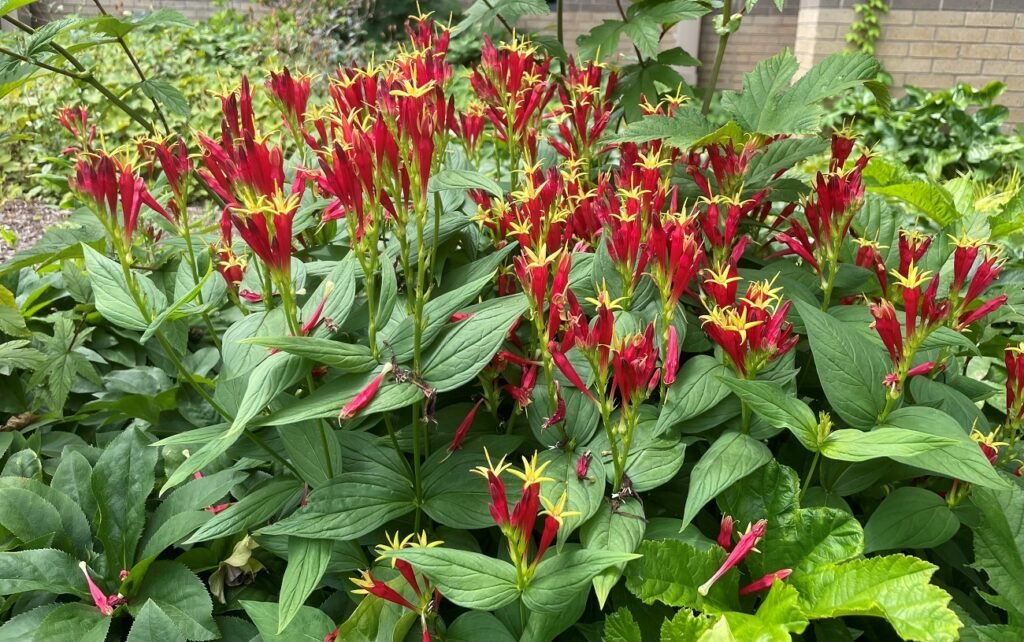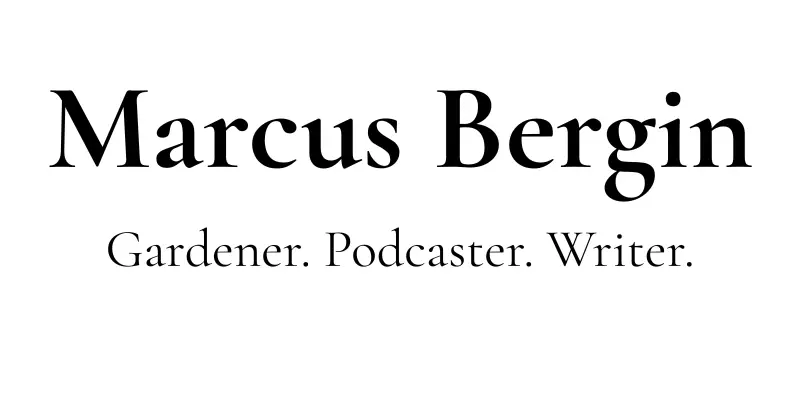
The Quiet Fireworks of the Shade Garden: Spigelia, Soil, and the Power of a Well-Placed Plant
There’s a little patch of ground near the back of a garden I once helped restore, north-facing, often damp, nestled between a lilac and the remnants of an old laurel hedge. Nothing showy ever seemed to thrive there. It wasn’t dark exactly, but it was quiet. Green on green. Moist, heavy soil. A place most gardeners would walk past.
Until one June afternoon when something caught the corner of my eye.
A flicker of red. Slender trumpets edged in gold. Elegant without being fussy, Spigelia marilandica had arrived, and suddenly, the whole bed felt alive.
You might know it by its common name, Indian Pink, though the colours are more flame and chartreuse than anything resembling pink. Native to the southeastern United States and hardy in USDA zones 5–9, it thrives in part shade with rich, moist soil. And while it’s been quietly loved by wildflower gardeners for decades, it still hasn’t earned its place in the average shade gardener’s toolkit. Let’s fix that.
Soil That Holds Water—But Not Too Much
Now, Spigelia does love moisture. But it doesn’t want soggy boots. Many of us with shady gardens, especially under trees or on lower ground, find our soil holds water like a sponge in winter, then dries to cracked clay in summer. It’s a tricky dance.
The best solution isn’t to strip your soil bare. Instead, add what’s missing.
For structure: Mix in grit, crushed shale, or expanded slate—something coarse that allows air in.
For richness: Leaf mould is perfect—slow to break down, full of life, and gentle in texture.
To lift wet spots: Consider slight elevation. A modest raised bed or mounded soil lets excess water escape while keeping roots in that moisture zone.
And above all, observe. If the soil puddles, amend and lift. If it stays damp but loose, you’re in luck. That’s Spigelia territory.
Companions that Sing in Harmony
Spigelia isn’t a diva. It plays beautifully with others—especially those that echo its woodland roots. Some companions I return to time and again:
Tiarella cordifolia – foamflower, with frothy blooms and lovely leaf shapes.
Heuchera villosa varieties – robust, humidity-tolerant coral bells in subtle tones.
Japanese painted ferns (Athyrium niponicum) – their silvery overlay picks up the lime-green of Spigelia’s bloom tips.
Aralia cordata ‘Sun King’ – bold, lime-leaved structure in the back row.
Hydrangea quercifolia – oakleaf hydrangeas bring volume, contrast, and late-season interest.
The idea here is balance. Let Spigelia be the spark, then build a setting that amplifies it.
Focal Points in the Shade: When Less Really Is More
Here’s the trick with shady gardens: light becomes the drama. It pools in certain places, dapples in others, and disappears altogether in deep corners. So when a plant like Spigelia flowers, slender, upright, jewel-toned, it matters where you put it.
Focal points aren’t always statues or grand gestures. Sometimes, they’re a plant that draws you in and holds your gaze. Here’s how to use them well:
Think in sightlines. Place Spigelia near a curve in the path, the edge of a bench, or across from a gate. Somewhere your eyes naturally land.
Frame it. Use surrounding foliage like a picture frame, ferns, large-leaved epimediums, or even soft grasses.
Let it breathe. Don’t crowd. Give it room so that when it blooms, it looks intentional. Celebrated.
Focal points in the shade are about moments. Pauses. Visual invitations to stop and notice.
Final Thoughts from Beneath the Canopy
In a world of massed blooms and punchy colour schemes, Spigelia offers something different, grace, timing, and presence. It doesn’t shout. It shines. And in doing so, it teaches us that even in the dimmest corners, beauty is possible with the right touch.
If you’re working with wet shade or looking to introduce a soft focal point to your garden, this is a plant worth inviting in. Pair it with texture-rich companions, amend your soil with care, and think of your garden like a whispered story, one told in layers, moments, and unexpected joy.
